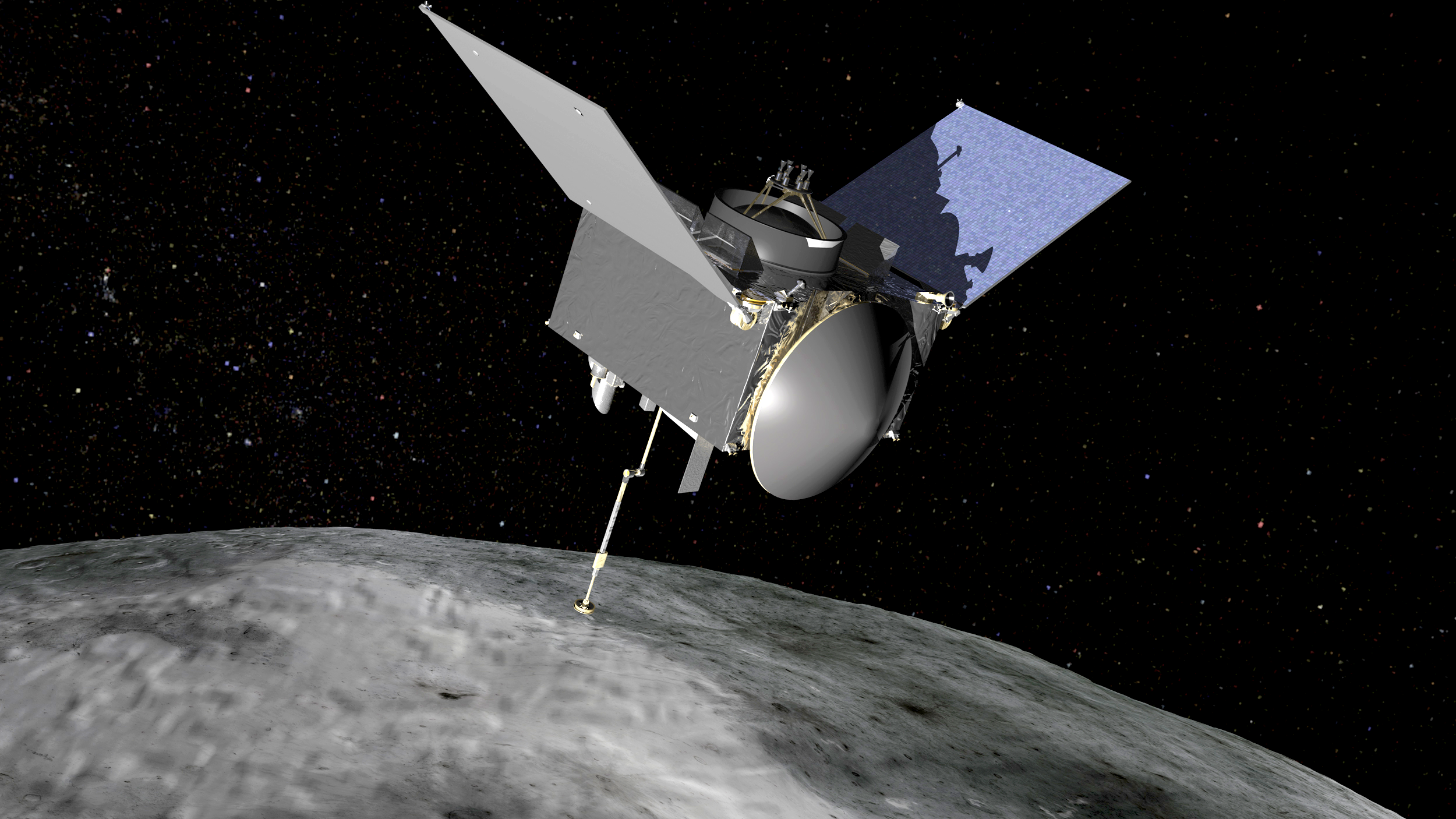Congratulations to 1992 UA Space Grant Intern Dante Lauretta: OSIRIS-REx is On Its Way to Bennu!

"NASA Gears up for Holiday ‘Season of Science’" by George Leopold, Science & Technology Writer - EE Times
NASA is billing the year’s end and the beginning of next the “season of science” as two probes approach their targets, chunks of rock and ice containing clues to the origin of our solar system.
In early December, if all goes as planned, a probe launched two years ago will rendezvous with an oversized boulder, the asteroid Bennu. The all-purpose asteroid sampler with a decidedly all-purpose name — Origins, Spectral Interpretation, Resource Identification, and Security-Regolith Explorer (OSIRIS-REx) — will attempt to collect a sample and return it to Earth in the fall of 2023.
Yes, this has been done before by the pioneering Japanese space agency that collected and returned a few grains from the surface of the asteroid 25143 Itokawa. A second spacecraft, Hayabusa 2 is scheduled to return a sample from near-Earth asteroid Ryugu by the end of 2020.
The claim to fame for OSIRIX-REx — let’s just call her O-REx — is that Bennu is the smallest object in the solar system ever to be orbited, a measly 500 meters across. That will require some fancy maneuvering as the spacecraft closes in on its target. Navigation in such a low-gravity environment means O-Rex will have to fly very slow and dangerously close to the surface, say about 10 times lower than the cruising altitude of a passenger aircraft.
On New Year’s Day 2019, meanwhile, NASA’s New Horizons probe will make its closest approach to an object in the Kuiper Belt dubbed Ultima Thule (“beyond the known world”). New Horizon’s long-range imager spotted its next flyby target in mid-August. The January 1 encounter will be the first up-close look at an object (other the demoted planet Pluto and its moons) in the Kuiper Belt, the region beyond Neptune chock full of icy bodies and comets.
The flyby will provide views of “the most primitive and most distant object ever explored,” NASA said, about 1 billion miles beyond Pluto, which New Horizons mapped in July 2015.
Meanwhile, Bennu was spotted by O-REx for the first time on Aug. 17 from a distance of more than 1.3 million miles. “It was right there where we thought it would be,” said Dante Lauretta, OSIRIS-REx principal investigator at the University of Arizona in Tucson. And so is the spacecraft following a September 2017 gravitational assist from Earth that accelerated the probe and placed it on a rendezvous trajectory.
In early December, O-REx will conduct a series of flybys just over 3 miles above the surface of Bennu to gauge the asteroid’s mass and gravitational pull. The probe is expected to poke along at just 11 mph.
Once controllers place O-REx into orbit around the space pebble, “close proximity operations” will begin in earnest with about 30,000 commands radioed up to the probe a week as it prepares for the main event: reaching down to the surface of Bennu with an untried robotic arm known as TAGSAM (for Touch-and-Go Sample Acquisition System) that will release compressed gas to stir up the surface to collect between 60 and 2,000 grams of regolith, or dust.
Rendezvousing with a rock roughly 142 million miles from Earth was hard enough, but the delicate maneuvers required to collect and return an asteroid sample present technical challenges on a par with the August 2012 landing of the Mars Curiosity Rover via a “sky crane.” The estimated 30-month return trip will culminate with the release of a disc-shaped sample return capsule that must survive a fiery reentry and then float down to the Utah desert floor on drogue and main parachutes, ending its seven-year roundtrip.
Bennu and the other near-Earth asteroids may be among the sources of Earth’s water and organic materials. NASA suspects Bennu is rich in organic matter, and the goal of returning a sample is part of the space agency’s “Small Body” missions may provide clues about the formation of our solar system 4.5 billion years ago.
You can track the progress of NASA’s asteroid sample return mission here.

